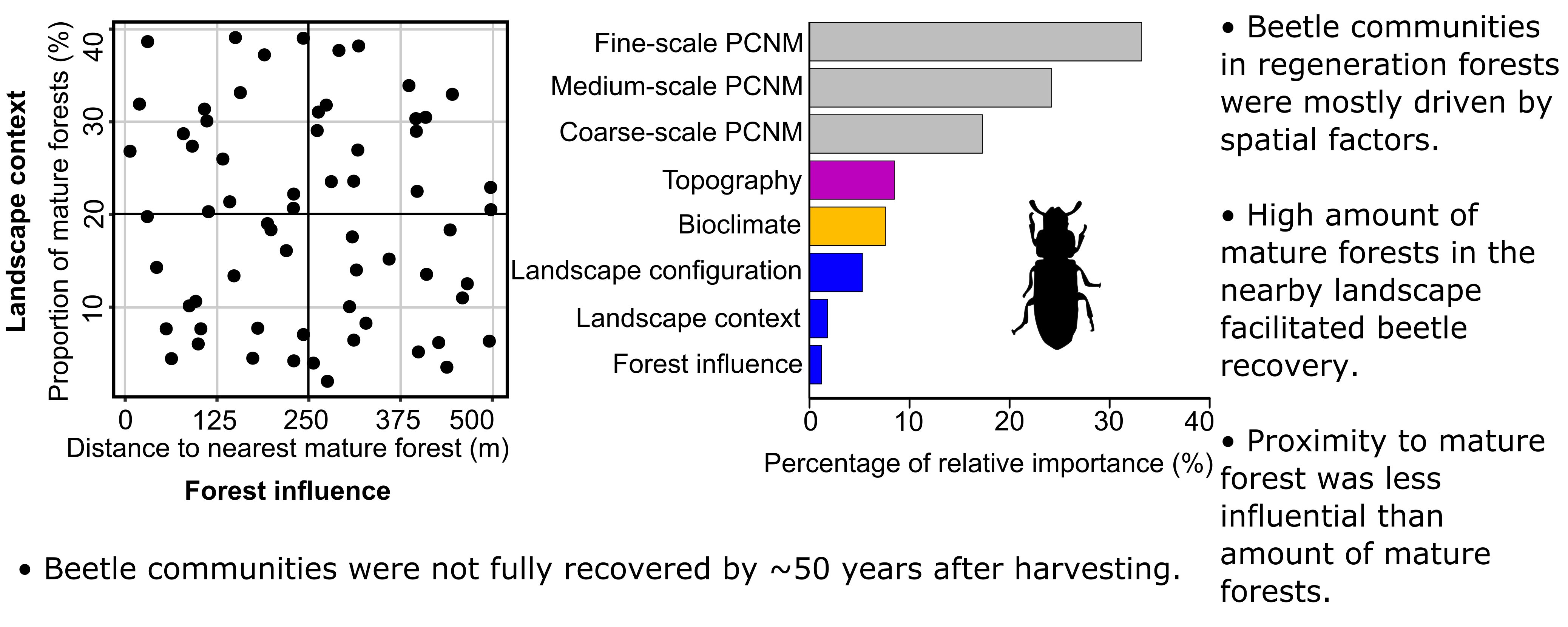Relative importance of landscape factors on biodiversity recovery

Retention forestry (also known as “variable retention”) has increasingly been adopted as an effective practice for ecologically sustainable forest management in order to reconcile demand for timber with biodiversity conservation. The pivotal object of retention forestry is, during harvest, to retain undisturbed patches within and adjacent to harvest units so that these patches can sustain mature forest species and process at the site-scale. In addition, this retention helps facilitate the re-establishment of mature forest species into previously harvested areas. However, the capacity of the developing forest after disturbance to provide habitat for many mature forest organisms varies not only with the internal characteristics of the regenerating forest, but also with the relative amount of mature forest (“landscape context”) in the surrounding landscape.
We set out to quantify the relative importance of landscape, spatial, and other factors by surveying beetle diversity in regeneration forest sites from each of 16 classes, representing each 125 m and 10% interval of forest influence and landscape context, respectively. The age range of regeneration forest sites was 40–58 years old. Twelve representative unlogged mature forest sites were selected to be well-distributed among the regeneration sites as controls.
While the geographic locations of sites accounted for most of composite ecological gradients, the beetle community is subtly influenced by the effects of landscape context, forest influence and other variables relating to landscape configuration. Long-term conservation of local biodiversity in managed forests requires maintaining a certain amount of mature forest, but their importance as beetle source populations declines as the regeneration forests mature.